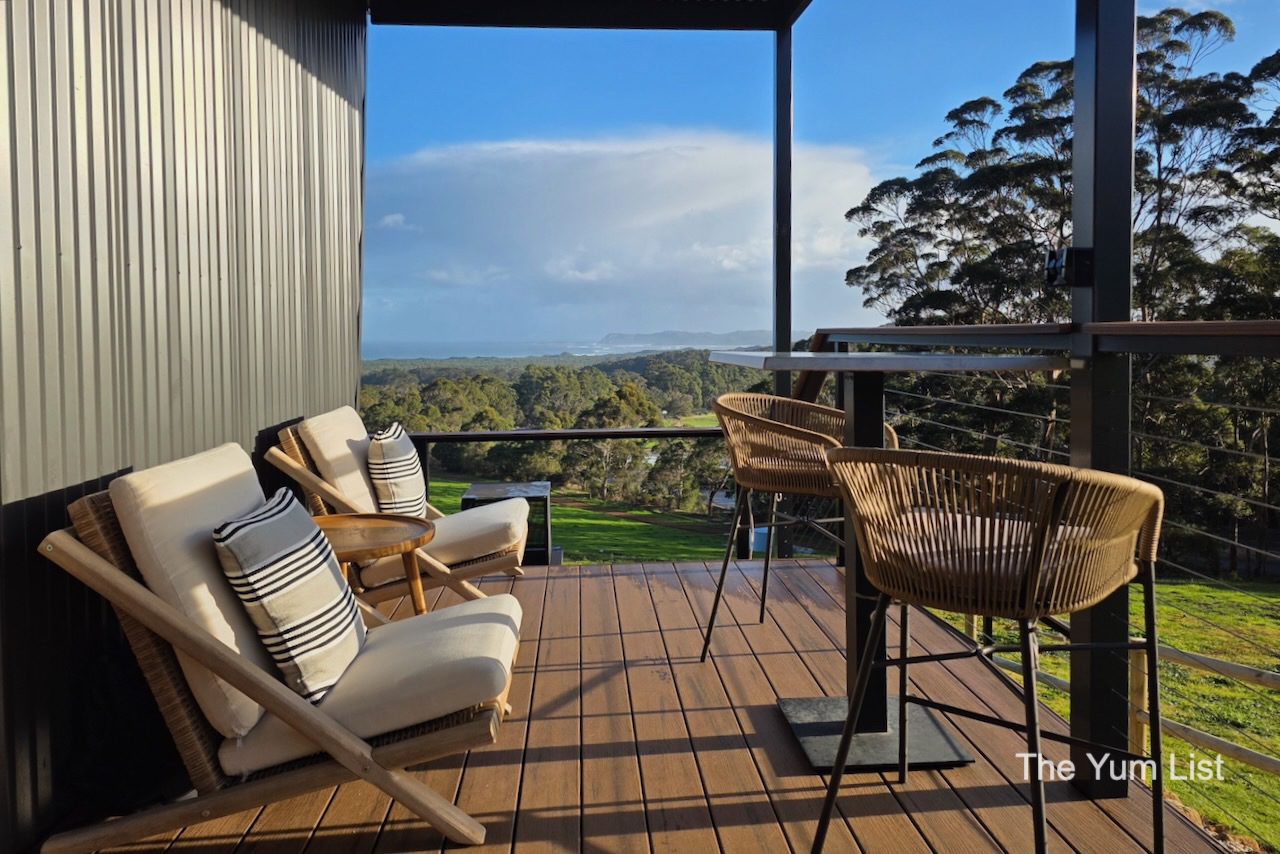Off-grid Living, On Point: What I Learned from Three Weeks in Western Australia’s Remote Cabins
Monica Tindall
After three weeks exploring the south of Western Australia, my suitcase came home full of red dirt, wine and gourmet goodies—but what really lingered were the thoughts about living differently. More quietly. More intentionally. Off-grid, even.
We stayed in a series of off-grid chalets, cabins and tiny homes—some luxurious, others more rustic, but all designed to run on minimal input and maximum efficiency. For me, it was more than just an eco-holiday. It was a chance to revisit a lifestyle I’d partially grown up with in rural New South Wales, where we harvested the rain, treated our own wastewater, and Dad butchered our meat. Years later, a university permaculture course during the pandemic rekindled my interest in sustainable living. This trip brought it all into sharp focus.
Here’s what I learned—from the beautiful to the bothersome, and everything in between.
You Don’t Have to Give Up Comfort for Off-grid Living
The biggest surprise? Just how stylish off-grid can be. Think plush linen sheets, walk-in rain showers, stone bench tops, moody lighting, and handmade ceramics. One place even had underfloor heating, powered entirely by solar. Being off-grid doesn’t mean “roughing it.” These stays had all the comfort of a boutique hotel—minus the hum of the city and extreme waste of daily living.
One of our favourite examples of good-looking design was Stillwood Retreat in Denmark, where timber craftsmanship, a giant bathtub and locally sourced finishes created a space that felt both luxurious and grounded in place.
When quality materials meet thoughtful design, we don’t feel like we’re compromising—we feel like we’re winning.
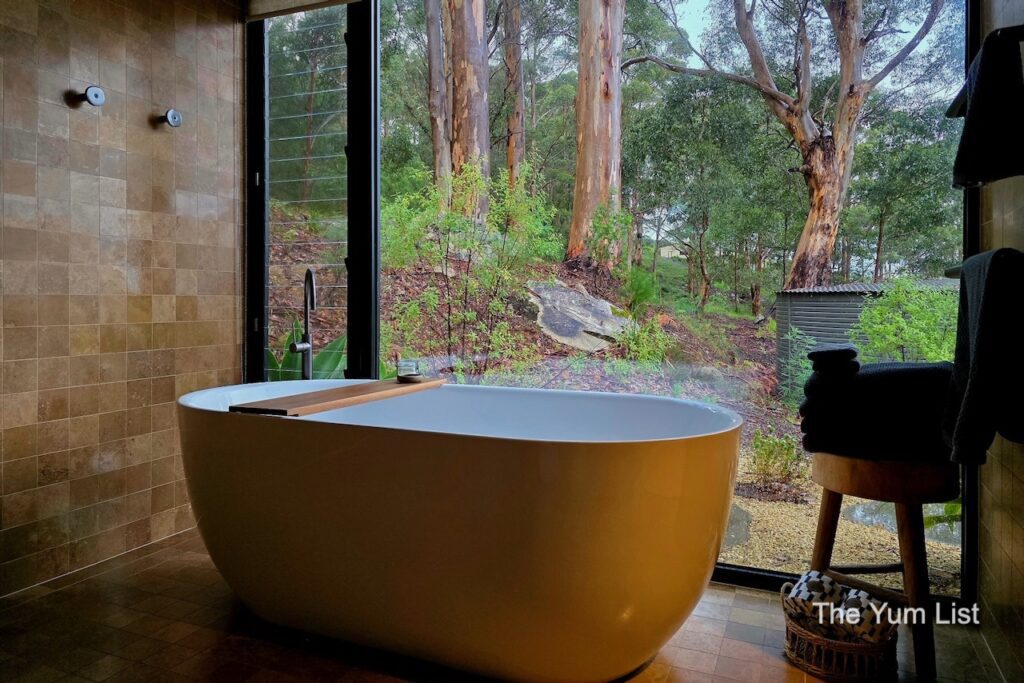
We Use More Than We Think
When you have to think about every watt of power and every drop of water, your awareness spikes. We adjusted easily—shorter showers, a load of washing during daylight hours, lights off when not needed—and it became glaringly obvious just how much we waste at home. Places like Hescape Tiny Cabins in Denmark had built-in features like a two-hour auto timer on the reverse-cycle air-conditioning that helped avoid waste.
We learned that running both the clothes and hair dryer at the same time reduces the power available for both. It wasn’t dramatic, just revealing. We live in a world of abundant energy, and that abundance has made us careless.
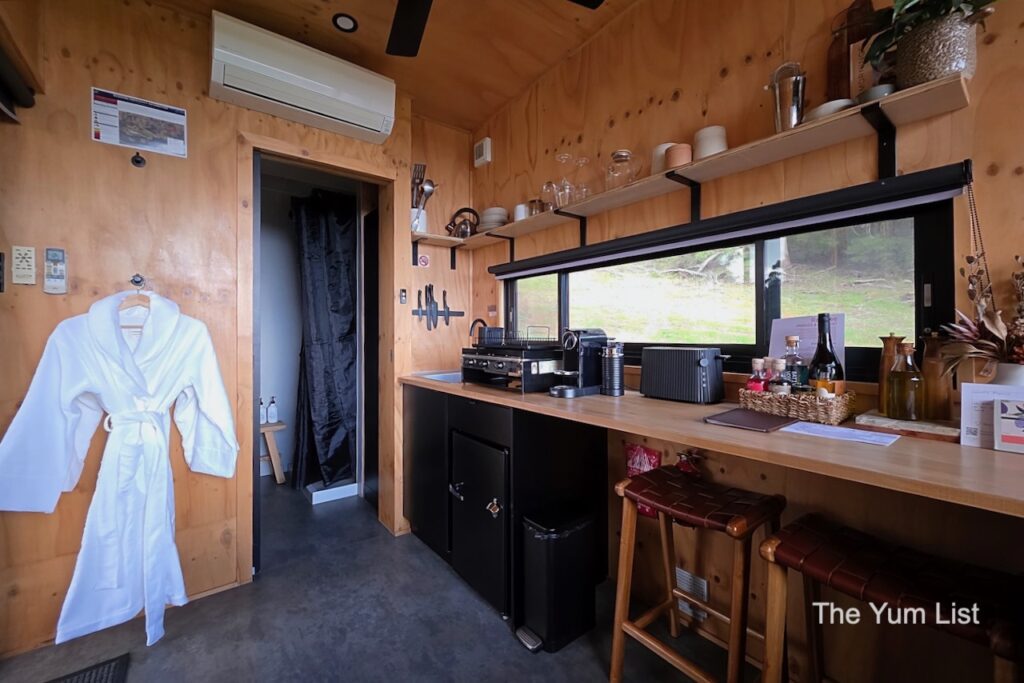
Fireplaces Are Romantic… Until They’re Not
After 27 years of city living, this trip revealed my husband’s hidden obsession with fire. Every evening, he’d vanish to collect wood, returning triumphant to stoke the flames like some eco-warrior. I, meanwhile, enjoyed the warmth—until I didn’t. Smoke irritates my eyes, the constant stoking gets old, and sourcing or chopping wood every day just doesn’t feel sustainable long-term. I’m also not convinced that the wood-fire systems we have in Australia are eco-friendly. Seems like a lot of smoke going into the air; I certainly didn’t appreciate it on my morning runs.
A fireplace is lovely in theory. But I’m not sure it’s something I want to rely on once the novelty wears off—or my knees wear out. Wine Treat Estate showed us that we could have the romance of the flame, without the labour and smoke of a woodfire – clever gas heaters that resembled fireplaces gave that fairytale flicker, at the touch of a remote.
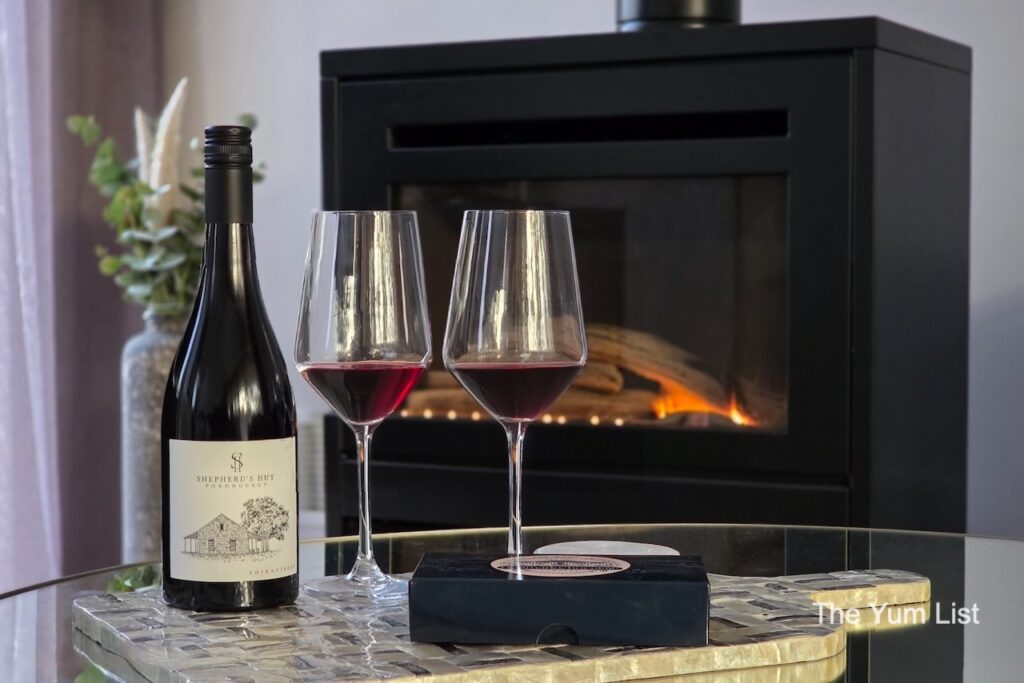
Soundproofing Saves Relationships
When you’re living in a compact space, sound carries. One of us is a night owl, the other an early riser. In cabins where there was no separation between sleeping and living areas, tensions inevitably flared. A simple solution? A second soundproofed room or even a closed-in verandah where one can read or potter without waking the other.
Also, the bathroom needs to be accessible without traipsing through the bedroom. It seems obvious as an afterthought, but it needs to get real in the design phase.
Although initially looking humble, Big Brook Retreat in Pemberton showed how clever design could make living small comfortable. A bedroom closed off from the living area and a separate entrance to the bathroom and toilet made all the difference in allowing us to keep our own sleeping and waking rituals without compromising our partner’s comfort.
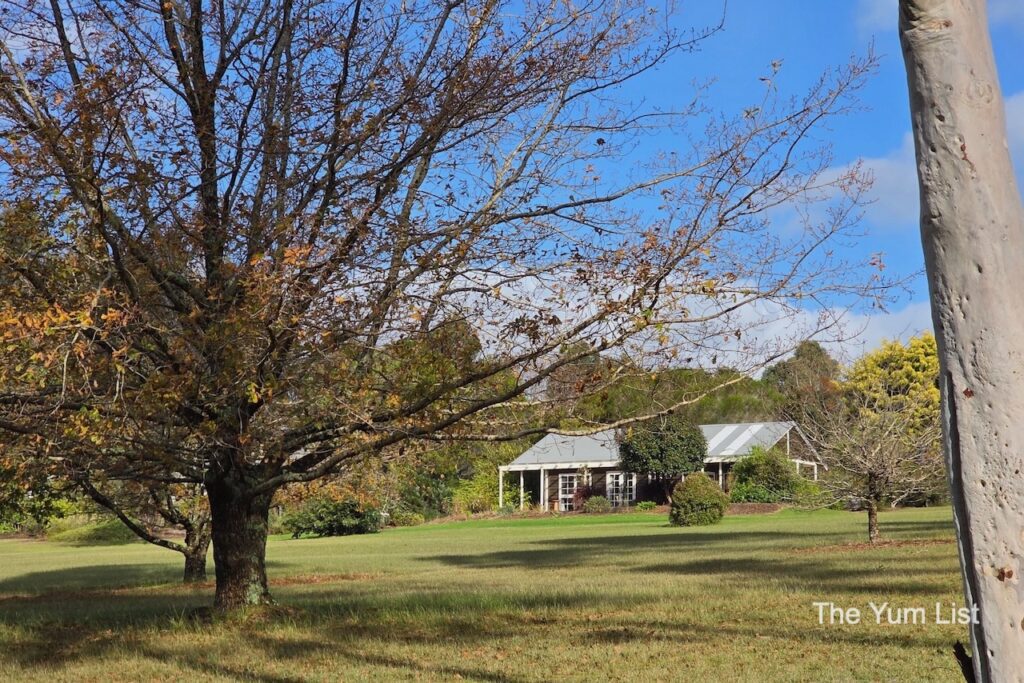
Orientation, Insulation, Ventilation—Don’t Skip the Basics
I learned this during my permaculture course, and it came roaring back in WA. Cabins that were well-oriented, insulated and ventilated were comfortable without artificial heating or cooling. The others? Clammy, chilly, or stuffy—sometimes all three in a day.
Skating Goose Farm in Ferguson Valley and Edge Luxury Villas in Margaret River showcased passive design at its best—welcoming the warmth of the winter sun and shielding from harsh summer rays. Sealed tight, the rooms kept their warmth or their cool.
Passive design isn’t a luxury—it’s a necessity if you want to live sustainably, comfortably and affordably.
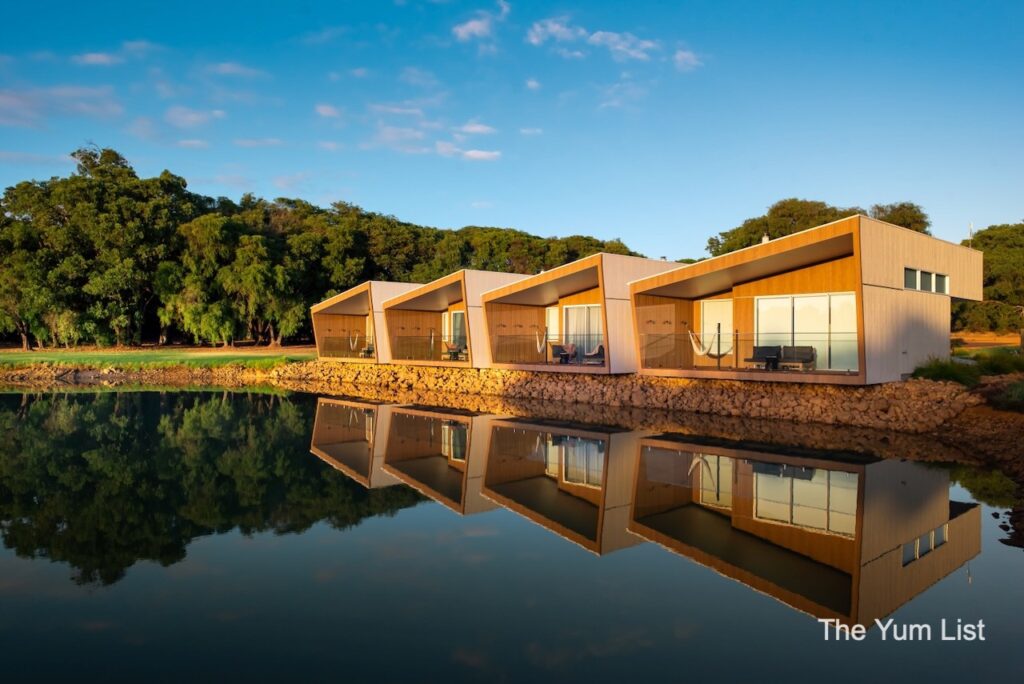
Privacy, Please
Bushland views through floor-to-ceiling windows? Yes please. But not if I’m brushing my teeth in the nud, visible to the odd passing hiker or kangaroo. A few of the cabins left us feeling a little too exposed. The best managed to offer both panoramic views and peace of mind, using one-way glass or blackout blinds.
As an example, Wine Tree Estate in Denmark, WA, had the most amazing high-powered spa bath, made even better with postcard-perfect forest views. One-way glass enabled us to fully enjoy both the tub and the views at the same time, without attracting (or scaring off) any passer-bys with our nudity.
It’s possible to feel immersed in nature without feeling watched by it.
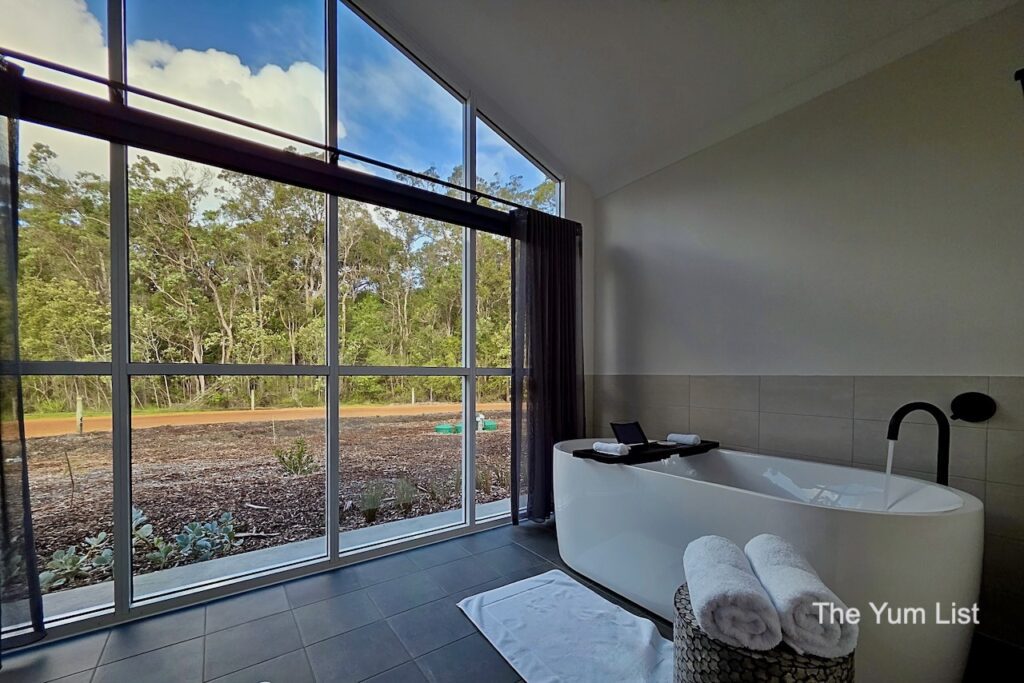
Invisible Luxuries Matter in Off-grid Living
When you pare things back for off-grid living, the details matter. A tap that doesn’t leak. A toilet that flushes efficiently. A drawer that glides shut. A mattress that supports a good night’s sleep. These are the kinds of “invisible luxuries” that truly define a quality stay—and a livable home.
All of our stays on this trip made high-quality fittings and furnishings a priority. Artisanal ceramics, dreamy bedding, espresso machines and milk frothers – all the small things add up. Ampersand Estates in Pemberton was designed with attention to all the things that annoyed the owners in their extensive business travel. Things like bad coffee, useless low-powered hair dryers and bath products that felt like detergent were all intentionally given a luxurious upgrade.
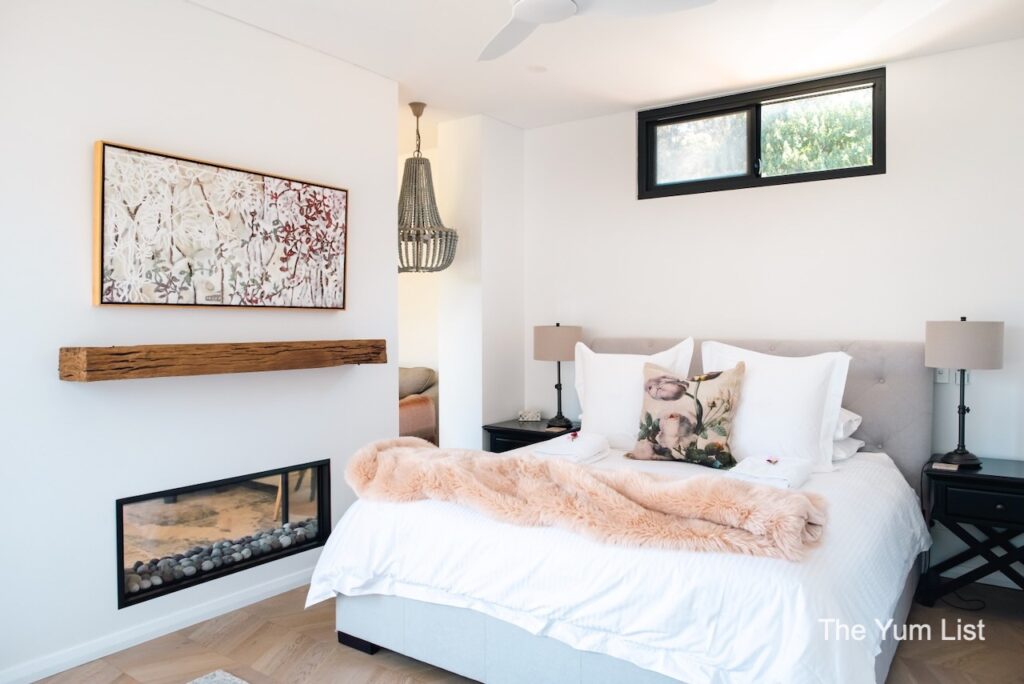
The Dream? Self-Sufficiency with a Side of Espresso
I want fruit trees. A veggie patch. A rain tank. A solar-powered studio with a view. But I also want access to a local barista who makes a mean brew. And to get to an airport without needing a two-day camel ride.
The sweet spot might not be in the deep bush, but rather on its leafy fringes—rural enough to feel the seasons, urban enough to catch a flight or a flat white without fuss.
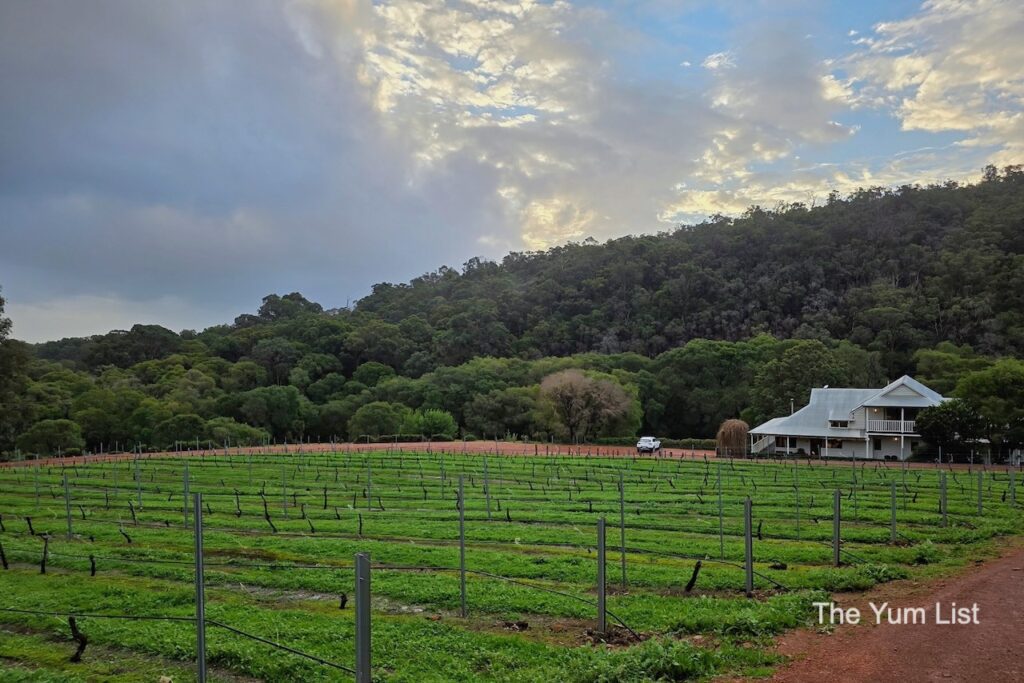
Would We Do It?
This trip didn’t just inspire us—it clarified what we need to live well. Comfort, yes, but also autonomy. Nature, yes, but also community. Solitude, yes, but preferably not at the cost of a weekly brunch outing.
Living off-grid isn’t about sacrifice. It’s about being deliberate. About asking what really matters—and building a life that reflects it.
Thinking of Off-Grid Living? Here’s What to Consider:
- Luxury and sustainability can coexist—invest in good design and materials
- You probably use more water and power than you realise, but once you’re aware, you can easily make changes
- A second quiet space can save your relationship
- Fireplaces are high-maintenance and, well, smoky—think twice before making them your only heat source
- Passive solar design is your best friend
- Privacy needs to be designed for, even in remote locations
- Small fixtures make a big difference
- Proximity to good coffee and transport still counts
Three weeks in Western Australia’s off-grid cabins reminded me that luxury and sustainability aren’t mutually exclusive. Thoughtful design, resource awareness, and a connection to nature all contribute to a life well-lived—one where comfort doesn’t come at the cost of the planet. Living off-grid isn’t about sacrifice. It’s about intention.
Find more travel tips for Australia here and stay up-to-date on the latest on gourmet travel with The Yum List on Instagram and The Yum List on Facebook.

